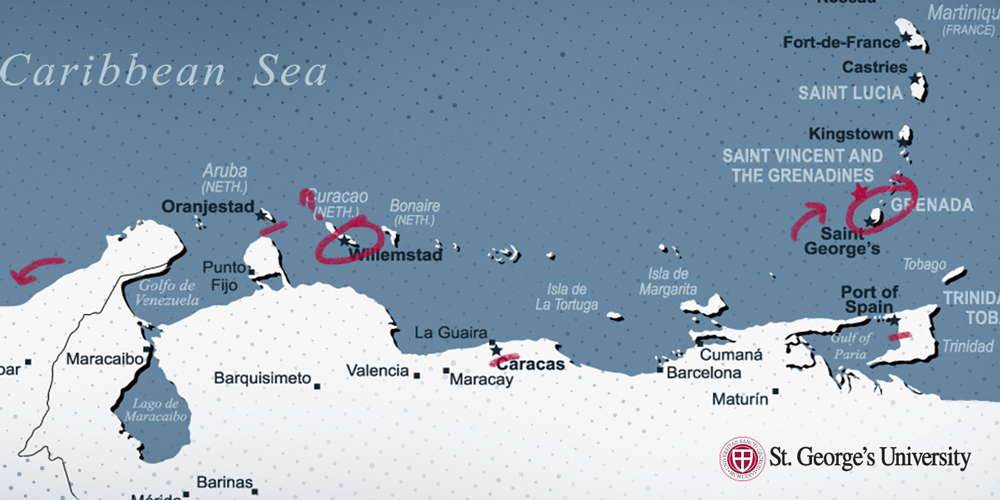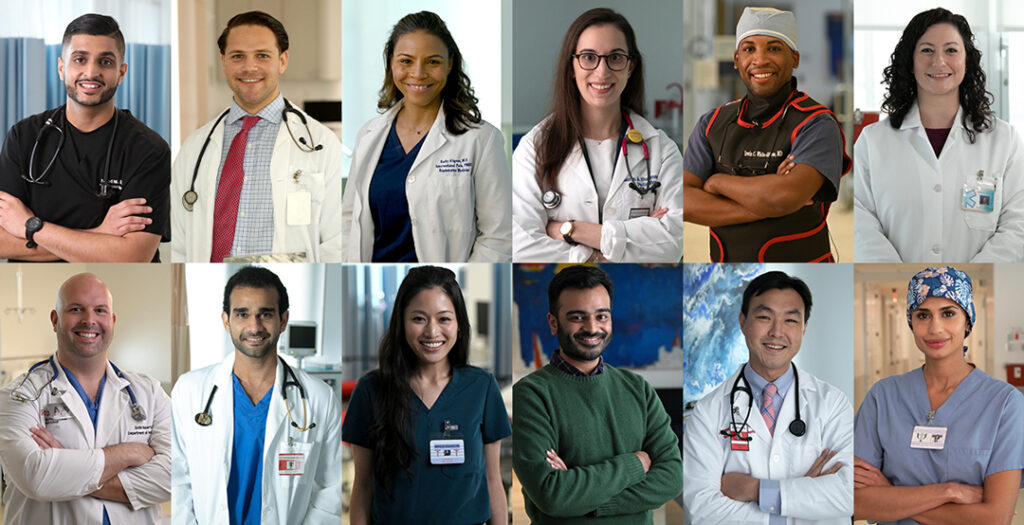There are jobs and there are careers. You might have had experience with the former by participating at internships, working part-time or having short-term roles during school breaks.
In comparison, pursuing a career as a physician will demand more education and training to work as a doctor. The first step in the process is getting accepted to an MD program. As you know, this can be quite a feat.
The only problem is there are so many schools, and they can vary greatly in quality. How do you know which programs provide you with the quality education you need to complete clinical rotations, secure a residency, and obtain your license?
We developed a list of seven criteria that will help you work your way through evaluation programs. You’ll soon have a shortened list of the best medical schools in the Caribbean that can help you reach your goals.
7 Things the best medical schools in the Caribbean have in common
1. A history of graduate success
Alumni are the leading indicators of the quality of a Caribbean medical school. A good place to begin your review is to look at residency placement rates and United States Medical Licensing Examination (USMLE) scores. Start by scouring each school’s website to find this information.
Once you know some numbers, take a moment to evaluate them. USMLE Step 1 performance data for 2019 shows 96 percent of first-time examinees from US and Canadian allopathic schools passed. As for residency placements, 93.7 percent of seniors from US programs obtained positions through the Main Residency Match. Be wary of any Caribbean medical schools that fall far short of these benchmarks. SGU provides USMLE and Residents facts online for students to explore.
You should also delve further into graduate outcomes by speaking to the very alumni who’ve been through the programs you’re considering. If the school cannot accommodate your request to speak with an alumni, that can be a red flag.
2. Solid GPA standards
Many medical schools, including those in the US, are moving away from setting college grade point average (GPA) minimums as they move toward a more holistic process. Medical schools in the Caribbean favor this approach, but don’t let the talk of a thorough applicant review keep you from doing your research. You should still look into every program’s average GPA.
There are a few things to consider when evaluating medical school GPA averages. US schools that do specify minimums usually set them at 3.0 or a bit higher. You should also know the average GPA for students accepted to US medical programs is 3.7, according to the Association of American Medical Colleges (AAMC). Be skeptical of a program that falls below this range.
3. Quality MCAT standards
It’s wise to look into how well a school’s students typically perform on the MCAT test. Look for average scores around 500 or higher. While some people argue that tests aren’t a true way to measure your potential, as part of the process of becoming a physician, you will need to take and pass multiple exams such as the USMLE.
With that in mind, MCAT scores are a big considerations because there’s no way to get around examination performance expectations prior to practicing. Keep in mind that you’ll also need to pass the USMLE series in order to become a physician.
4. Appropriate accreditation
You’ve probably heard a bit about the importance of attending a properly accredited institution in order to practice medicine in your desired area.
It probably seems like you’d want to attend an international program that has US accreditation, right? The issue here is that isn’t possible. The Liaison Committee on Medical Education (LCME) is pretty clear in stating they do not accredit medical programs outside the US and Canada.
The key is to search for Caribbean medical schools accredited by an agency the World Federation for Medical Education (WFME) recognizes. Students who graduate from international programs must obtain certification from the Educational Commission for Foreign Medical Graduates (ECFMG) in order to practice in the US. Beginning in 2024, the ECFMG will only extend certification to graduates who attended an international medical school that is accredited by an agency recognized by the WFME and meets its accreditation standards.
SGU School of Medicine is accredited by the Grenada Medical and Dental Council (GMDC). The World Federation of Medical Education (WFME) and the U.S. National Committee on Foreign Medical Education and Accreditation (NCFMEA) both recognize GDMC as a valid accreditation body.
The WFME’s recognition of GMDC also ensures that SGUSOM students will continue to have access to:
- USMLE Step exams
- US clinical rotations
- Eligibility for US residency placement
- The physician licensing process in the US and many other countries.
In addition to other approvals, GMDC meets the US Department of Education (US DOE) standards to allow US citizens and permanent residents access to US DOE loans.
5. A successful clinical program
Completing clinical rotations is arguably the most important part of your time in medical school.
You should familiarize yourself with each Caribbean medical school’s affiliated hospital network. You want to have a lot of options in multiple states instead of being left to scramble for a limited number of placements. If you discover that a school doesn’t offer a clinical rotation in the United States, it will limit your options and could have an impact on U.S. residency placement in the future.
6. Exceptional facilities
Booking a trip to any program you’re seriously considering is a good idea. It becomes even more important when you’re looking into medical schools in the Caribbean.
While some offer a great learning environment and modern technology, others simply fall short. It is easy to look at pictures and website descriptions, but these can potentially make the facilities seem better than they really are. In addition, visiting a campus will give you a better sense of the student culture and the calibre of facilities where you will be spending time. It is also helpful to speak to student on campus who will have insight into their daily experience as a medical student.
It might seem like visiting a school in the Caribbean is an expensive undertaking, but given the time and financial investment, it can really make or break your decision about the campus and the education you will be receiving.
7. A supportive environment
Medical school is tough regardless of which program you ultimately attend. You may find yourself feeling anxious or struggling with one of your science courses. You’ll be much better off when you run into problems if your medical school prioritizes student support services. The best way to find out what different programs offer is to inquire. A few things you might consider asking about are faculty office hours, learning strategies services, and career guidance.
Choose wisely
While there are almost too many medical schools in the Caribbean to count, there are many factors to consider to help you narrow the list. To make the decision a bit easier, it is a good idea to focus your attention on medical schools who meet these standards and start there.
After taking the time to thoroughly research Caribbean programs, you’ll most likely find yourself taking a second look at the St. George’s University School of Medicine. While all of the evaluation criteria we mentioned are important, graduate outcomes are particularly telling. Residency placement information can tell you a lot about how prepared students are upon completing school.
Learn more about St. George’s University graduates by reading, “SGU Residency Placements: 6 Facts That Might Surprise You.”
*This article has been updated from a previous version (January 2021) to include current facts and figures.

